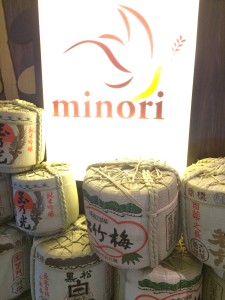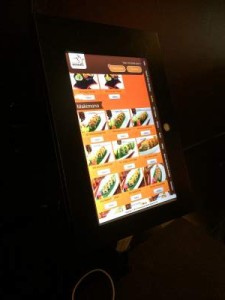My ten-week internship with PayrollHero reached its end last week. As a fitting closure to my first post on hiring interns in Singapore, I thought it would be a good idea to write about my experience here. I’ve had an amazing summer at PayrollHero and learned more than I thought I would. Ten weeks flew by and it took a few days to organize my thoughts. Here is what I learned from my internship at a startup in Singapore.
 Lesson 1: Learning is built in to PayrollHero’s DNA
Lesson 1: Learning is built in to PayrollHero’s DNA
The company doesn’t just declare its “Ridiculously Client Focused” psyche on the website, it lives and breathes the idea. To achieve that end, everyone is always learning new things through whichever means that they can. But it doesn’t end at just learning something by yourself, it’s all about sharing it with everyone else. When I joined the communication channel, Slack, the most interesting channel to me was the reading-list. A mandatory channel for all members, the reading-list includes articles that are relevant to the team from all kinds of sources. Anyone can share something that they have read, and anyone can comment on it.
One of the first things I did at PayrollHero was to broaden my reading base. As an economics student, the obvious reading material I blindly follow are opinion blogs by economists, or economics journals, and of course, the newspaper. But within two weeks, I had apps on my phone that gave me news about startups, tech blogs and more. It was awesome to see that everyone was invested in improving themselves and the team. It was also interesting to see what everyone was reading. Rarely does a college kid get the chance to find out what seasoned entrepreneurs are reading. And here I was, discussing the very articles with the founders of PayrollHero.
Lesson 2: You’re an intern, and you’re still taken seriously
Trust me, this one was huge. While I was interning at PayrollHero, I had friends interning at big accounting firms, consultancies and banks. I would often hear stories about their internships where all they did was photocopy documents for their bosses. This was not the case across the board, but I heard it often enough to realize that my internship was unique.
During the ten weeks, I never once had the impression that I was just an intern slaving away at something inconsequential. If it ever seemed like I was not doing enough, I could speak up about it and get more work to do. The great thing about working in a small place is that there is always something to do and the little that you contribute has a visible impact on the company. Furthermore, Steve ensured that the communication lines were open and that an intern in the Business Development team was equally important (and accountable) as any other member on the BD team. The feeling of being a relevant member of a team is definitely something that I will take with me from this internship.
Lesson 3: Diversity
When I read about PayrollHero before sending in my resume, I loved the idea of Adventure Engineering and knew that PayrollHero was based in the Philippines, Singapore and Canada. To me, that seemed to reflect diversity well enough until I met the team. If you hang out with the Singapore team, you will find yourself in a room with around 10 people representing at least 7 different nations. That is incredible and speaks volumes to the success of PayrollHero’s drive to attract talent, no matter where it comes from.
There are many studies that show how diversity improves results in a company. Diversity was a crucial aspect in my experience. Despite being an international student studying in a foreign country, I had never seen so many nationalities from across the world working together before I showed up at PayrollHero. Imagine this, a Canadian, Ukrainian, Polish, Indian and Filipino sitting in a hawker center, eating a plate of prata and talking about the latest episode of Game of Thrones. As ridiculous as that sounds, it’s just another regular day at PayrollHero. You can’t help but appreciate how easily PayrollHero has embodied the concept of diversity in a company.
Lesson 4: Hanging out with the team over beers
If I look back over the ten weeks I was at PayrollHero, some of the most memorable interactions with the team was not during work, but outside it, when everyone hung out with some beers after a long day of work. I learned the most about the people who make up PayrollHero during this time. Whether it was about their professional lives or just a casual conversation about what everyone’s “ah-ha!” moment was during the DDD workshop, these interactions helped me understand people in a world I had little or no idea about.
I think this is especially invaluable to interns because a large part of interning is to try and figure out what to do with our lives professionally. While colleges make an effort to conduct networking sessions with professionals from every field, it does not come anywhere close to actually spending time with the same people day in and day out.
Finally, all these elements together made for an internship that immensely broadened my perspective. When I first walked into PayrollHero, I wondered if an unstructured internship would teach me anything new or if the work would be rewarding. But the truth is, the very fact that it was an unstructured program made me want to push myself to do new things and be open to ideas that I wasn’t exposed to before. At the end of it, I came away having met inspiring people from all over the world, learning about the startup culture and learning more about myself through it all. I hope the little work I did at PayrollHero was useful to the company. I also greatly appreciate the time invested by Steve and Mike and everyone else to make my internship worth it. At the risk of sounding super cheesy right now: good luck, PayrollHero, and may the force be with you!
Editors Note: Thanks Pragya!! While Pragya is off on her next adventure you will still see her posting on the PayrollHero blog a few times a month.
 We recently did a post on restaurant technology in Singapore where we spoke about how restaurants are adopting technology to deal with the labour crunch. Apps like TradeGecko are helping companies manage inventory, Chope automates the concept of reserving tables and Perx is redefining loyalty cards in the form of an app. Restaurants like Shin Minori and Coastes are adapting to the changing environment by using electronic menus instead of waiters who take orders from customers.
We recently did a post on restaurant technology in Singapore where we spoke about how restaurants are adopting technology to deal with the labour crunch. Apps like TradeGecko are helping companies manage inventory, Chope automates the concept of reserving tables and Perx is redefining loyalty cards in the form of an app. Restaurants like Shin Minori and Coastes are adapting to the changing environment by using electronic menus instead of waiters who take orders from customers. On a busy day, this is especially helpful because no time is wasted on waiters who are busy with other tables. Customers can order as they please and take their time deciding what they want to eat. By using eMenus, the restaurant has reduced labour costs by keeping only food runners to serve food.
On a busy day, this is especially helpful because no time is wasted on waiters who are busy with other tables. Customers can order as they please and take their time deciding what they want to eat. By using eMenus, the restaurant has reduced labour costs by keeping only food runners to serve food. Coastes
Coastes

 1. You are the CEO of Bigg’s and ¿Que Pasa? – can you tell me a bit more about each brand?
1. You are the CEO of Bigg’s and ¿Que Pasa? – can you tell me a bit more about each brand? 2. ¿Que Pasa? – sounds exciting, can you tell us a bit more about how the brand came about, what you did to understand your communities needs, etc?
2. ¿Que Pasa? – sounds exciting, can you tell us a bit more about how the brand came about, what you did to understand your communities needs, etc? 5. How do you decide on a location? (mall? street level? stand alone business?)
5. How do you decide on a location? (mall? street level? stand alone business?)



 Coffee brands ~ Really happy that I got to see some coffee brands present at MAFBEX! And guess what? They’re all franchise-ready! I had a trip to Bangkok recently and there were coffee kiosks in almost every street that I went to. Amazing! That would be a perfect dream.
Coffee brands ~ Really happy that I got to see some coffee brands present at MAFBEX! And guess what? They’re all franchise-ready! I had a trip to Bangkok recently and there were coffee kiosks in almost every street that I went to. Amazing! That would be a perfect dream. Baking supplies ~ There were several booths selling cake decorating tools, packaging materials, stencils, etc. But, I just had to take a photo of the materials below because they were really huge.
Baking supplies ~ There were several booths selling cake decorating tools, packaging materials, stencils, etc. But, I just had to take a photo of the materials below because they were really huge. Lesson 1: Learning is built in to PayrollHero’s DNA
Lesson 1: Learning is built in to PayrollHero’s DNA Jack Daly has been on a tour of Southeast Asia the last few weeks.
Jack Daly has been on a tour of Southeast Asia the last few weeks.  Creative destruction
Creative destruction
 The Singapore Chinese Chamber of Commerce & Industry
The Singapore Chinese Chamber of Commerce & Industry